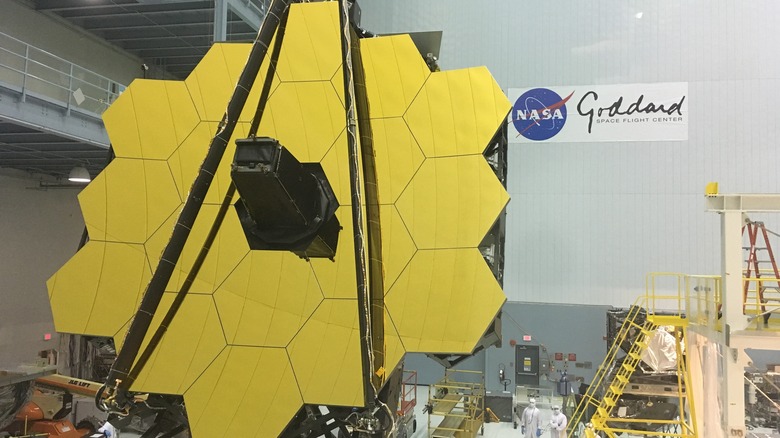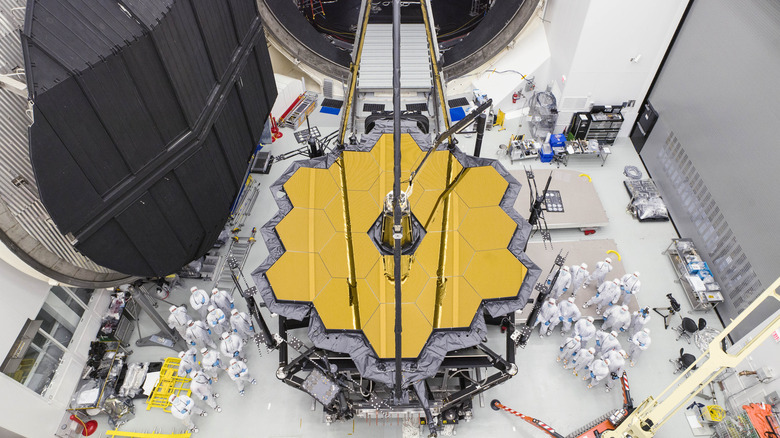How NASA Made Sure James Webb Was Ready For The Rigors Of Spaceflight
Sending anything into space is inevitably going to be a bumpy ride. From the shakes and shocks of launch to the freezing cold temperatures above Earth's atmosphere, spacecraft have to be ready to endure harsh environments. That's even more true when they have been designed to last decades, as the James Webb Space Telescope has. Following its launch in December 2021, the telescope unfolded its hardware as it traveled to its orbit around the sun, L2, and fortunately, everything worked as planned. Now, it looks like Webb will be able to keep collecting science data for at least 20 years (via Space Telescope Science Institute). NASA recently shared how it tested Webb to make sure it was ready for its space adventure.
Spacecraft typically go through a process called vacuum testing in which they are placed inside an existing vacuum chamber that sucks out all of the air and simulates the cold temperatures of the space environment. But this wasn't possible with Webb because of the way it had been designed (via NASA). Webb is designed so that one side of it, protected by its enormous sunshield, is always facing both the sun and the Earth. The other side faces out to space. This way, the side with the sunshield can handle the higher temperatures it would experience.
The testing team considered building a special, huge vacuum chamber just for Webb, but that would have been expensive and time-consuming. Instead, they split the entire telescope in half and tested one half at a time. "We couldn't just stick the entire observatory in one vacuum chamber and duplicate everything at the same time," Paul Geithner, Webb Deputy Project Manager for Technical Verification, said. "So that's why we tested in two big halves. It turned out our approach worked."
Testing troubles
Testing can be a nerve-wracking process, and at one point the testing team was rather concerned. In 2016, a part of Webb was being put through vibration testing, in which the hardware is rapidly shaken to ensure it can withstand the jostling of launch, at NASA's Goddard Space Flight Center. All appeared to be going to plan until the testing team heard a loud crack. "People said 'Oh my god, did we just break it?'" said Geithner (via NASA). "I mean, it sounded bad. Then the test automatically shut down. That was probably the scariest point."
Fortunately, the hardware itself was not permanently damaged, and the engineers added mass dampers to support the secondary mirror to make sure it could survive launch without fracturing. Another challenge arose during the testing process when Webb's telescope was at NASA's Johnson Space Center in Houston, Texas, in 2017. Then hurricane Harvey rolled in — a category four hurricane that made landfall in Texas in August 2017 (via National Weather Service). Members of the team stayed at Johnson to watch over Webb in shifts and continued testing to make sure it worked as planned.
All of this hard work and careful planning over a years-long testing process proved worth it, as Webb was able to launch, deploy, and reach its orbit with no problems — an achievement that shouldn't be underestimated. The team calculated there were 295 single-point failures that could have damaged the mission. "All of those failures could have happened, and they didn't, thanks to all the process controls and testing implemented over the years," Geithner said. "So we said, 'This thing is going to work.'"

